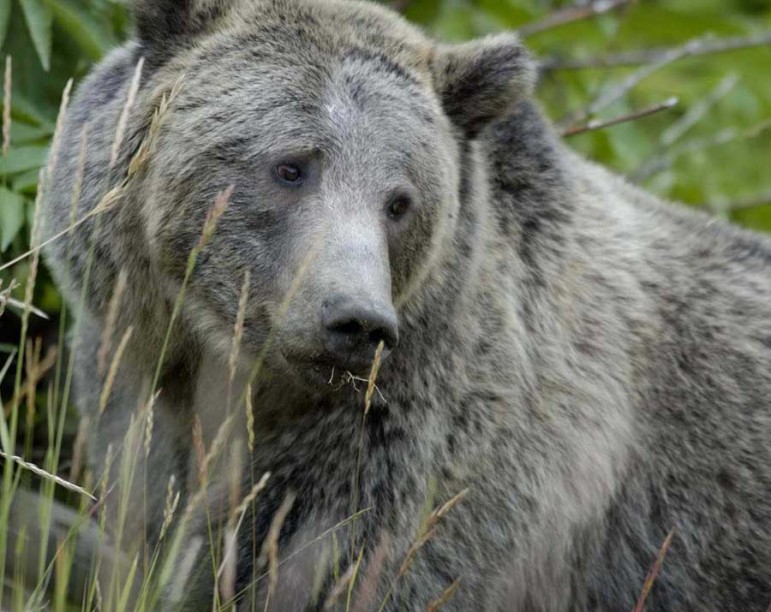
A team of grizzly bear biologists and managers meeting in Montana this week voted unanimously to recommend removing greater Yellowstone area grizzlies from the federally administered list of threatened and endangered species.
At their annual winter meeting in Missoula, the Interagency Grizzly Bear Committee (IGBC) met to hear reports from the various ecosystem subcommittees responsible for grizzly bear recovery and management in the six recovery areas in the contiguous United States and adjacent Canadian Provinces. The group adopted the findings of a report that suggests grizzly bears are highly adaptable in finding a diverse range of foods, and that declines in whitebark pine trees are not likely to pose a significant threat to grizzlies. Whitebark pine seeds are an important source of energy-dense food for Yellowstone area grizzlies.
Managers meeting earlier this year in Bozeman to review the latest data on grizzly conflicts and whitebark pine losses had been concerned that weak production of whitebark pine cones would mean more conflicts as grizzlies sought other food sources.
Instead, they heard “reports of surprisingly few conflicts between humans and grizzly bears, even though a record count of 58 unduplicated females with cubs were observed in the ecosystem this year.”
Researchers count females with cubs as a way of statistically extrapolating a total number of bears in the area. Their 2013 population estimate stands at 629 grizzlies.
Bear managers worked to gather better data on the role of whitebark pine seeds in bears’ diets after a series of federal court rulings that have returned and kept grizzlies on the endangered species list despite a move in 2007 by the U.S. Fish and Wildlife Service to delist them.
A statement released Wednesday by IGBC spokesman Gregg Losinski of the Idaho Department of Fish and Game described the “overall mood of the meeting (as) one of success as the health of grizzly populations was detailed.”
While the groups’ acceptance of the report alone does nothing to trigger the delisting of grizzlies in the Yellowstone area, its overwhelming acceptance by the IGBC is a strong signal of approval to managers with the U.S. Fish and Wildlife Service of their plans to end grizzlies’ protected status.
The agency is expected to decide sometime around the new year whether to move forward with a new proposed rule to delist the Yellowstone grizzly population. Any approved proposal would be published for public comment sometime in mid-2014.

Such BS, only 629 bears and it’s time to delist. Time to kill off the grizzlies as they have done with the wolves. You corrupt government bureaucrats, it’s all about the mighty dollar isn’t it. Despicable, cowardless, bottom-feeding scums.
“Time to kill off the grizzlies as they have done with the wolves.”
Where have you been since 1995? Get your head out of the sand and become informed for crying out loud. Until then, your comments are only good for some laughs…in a sad kind of way.
Will make a comment after reading report. Thank you
Instead of delisting, maybe relocate a few to broaden gene pool and restablish them in Sierra and Cascades too. Again 629, no reason to delist, celebrate or open a season on them.
Not good news. This has more to do with money and the human population expanding. I know it’s an unending conflict between human needs and wildlife needs but there isn’t an overpopulation of grizzlies. Just too many people around to run into a grizzly or unwilling to take measures to coexist with them whereas the grizzlies and any predator would happily stay away from humans if given a chance. This isn’t based on the needs of the grizzlies surviving and thriving but the needs of humans. Grizzlies don’t reproduce at a rate like rabbits do, so I can only imagine how fast their numbers will dwindle if removed from protection. The same goes for any predator. Their numbers are never big enough before someone wants to hunt them to near extinction once again.